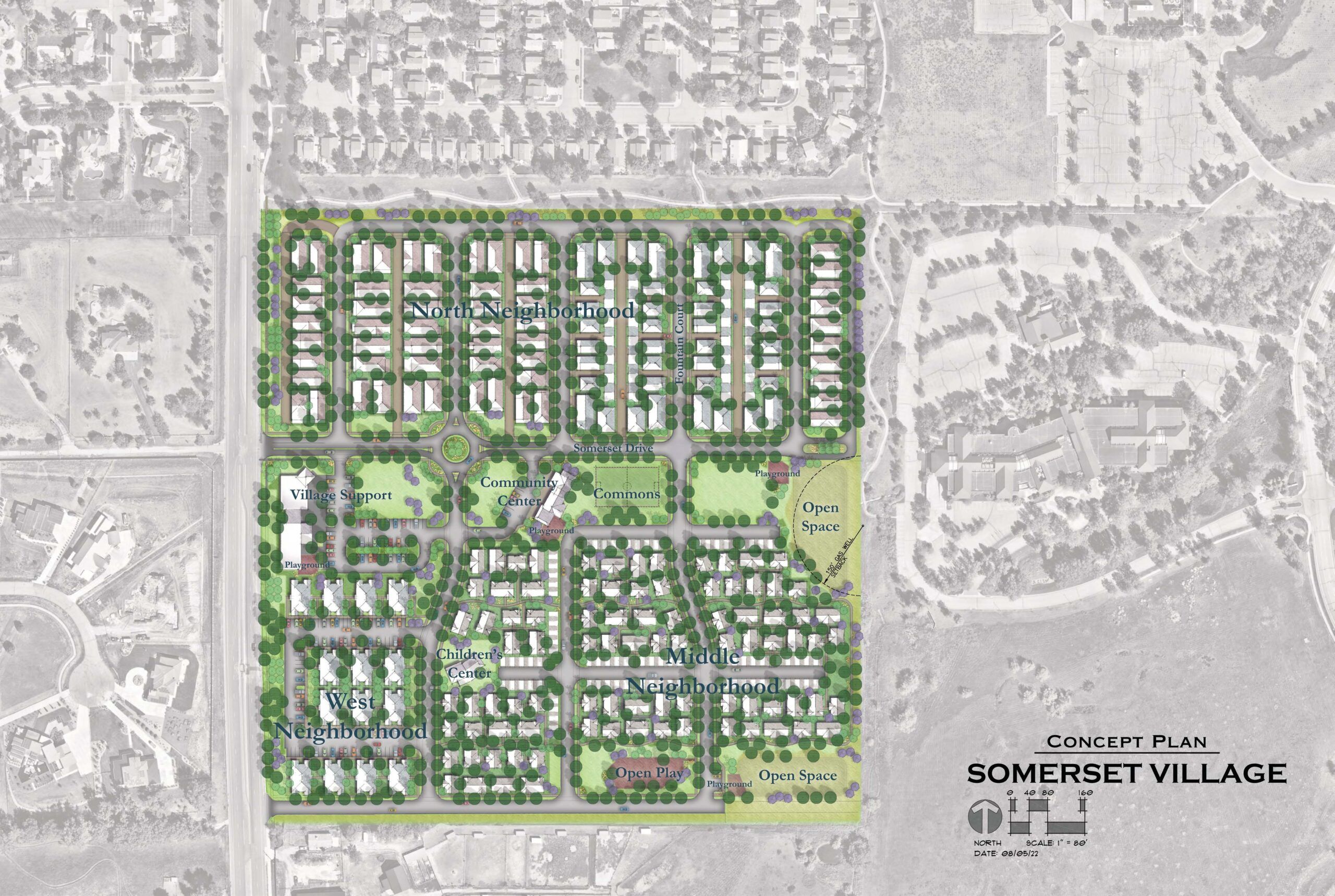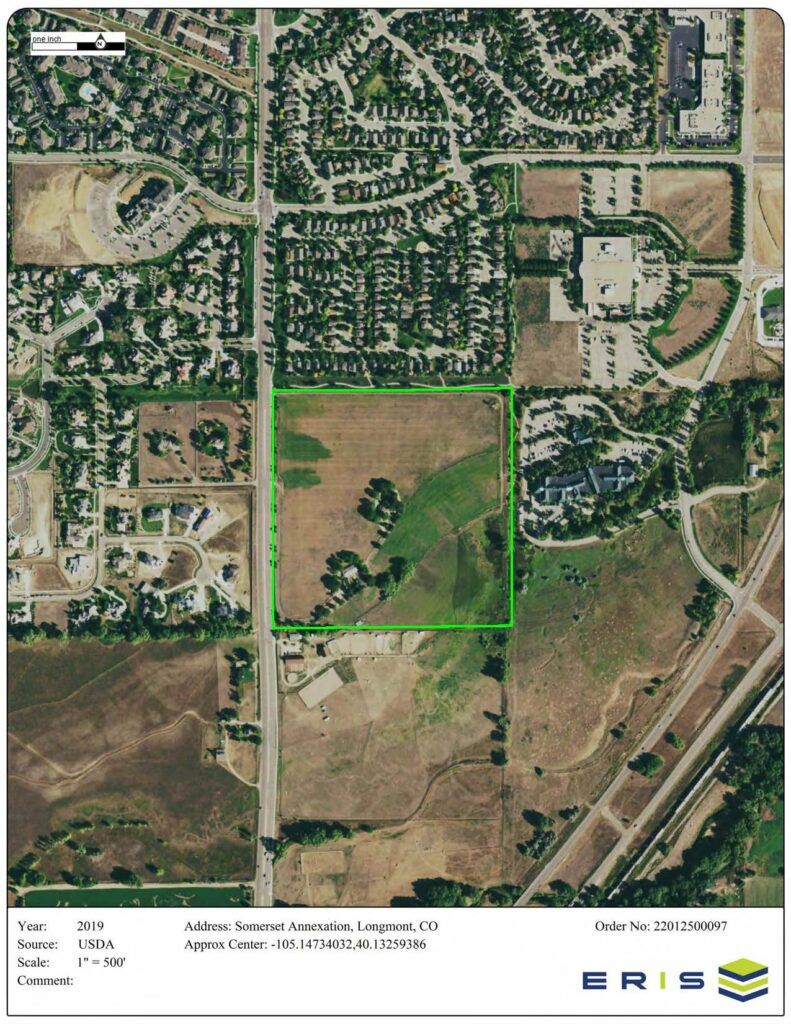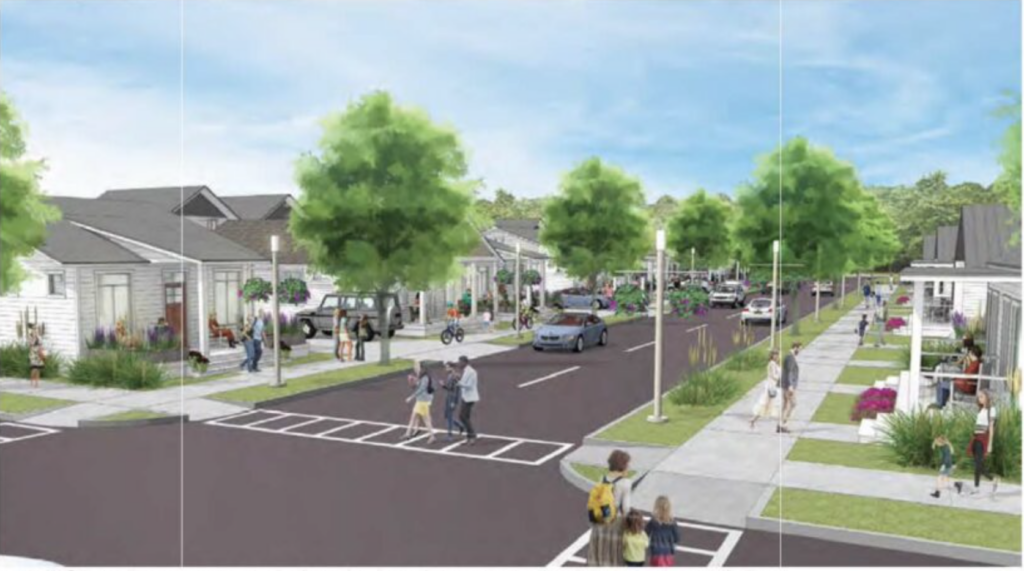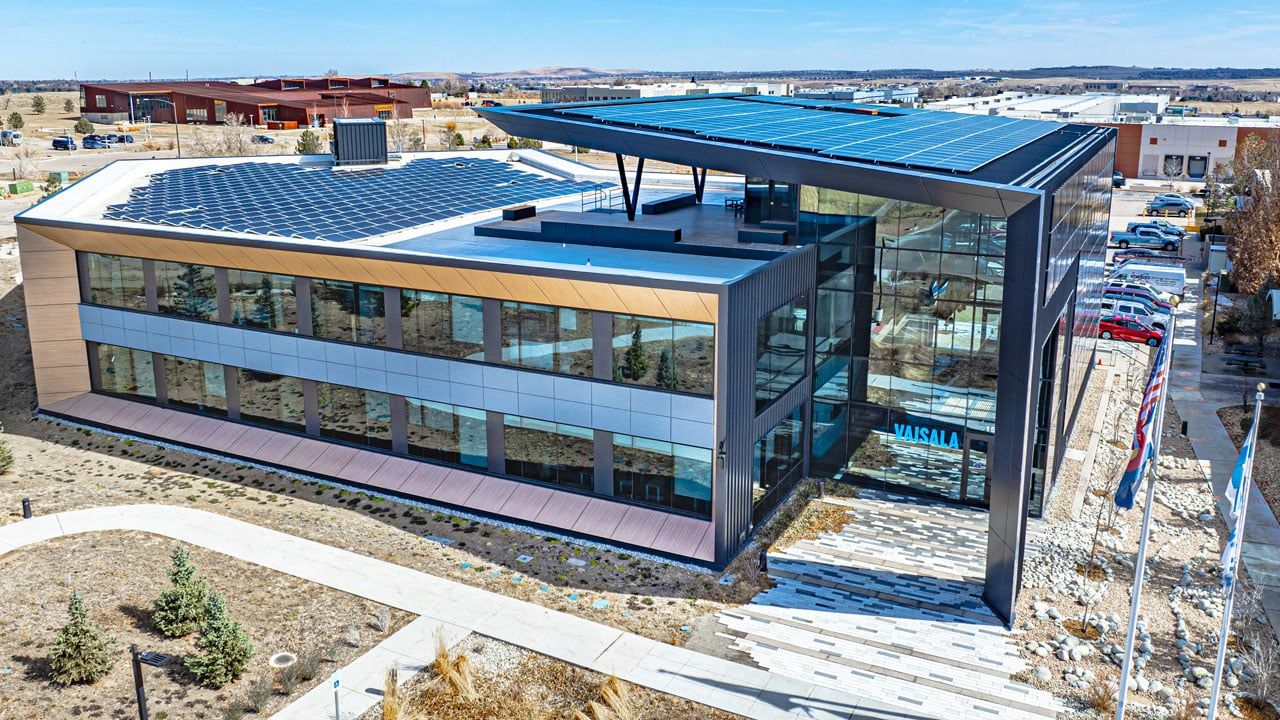A clash of interests
Boulder County commission meeting Tuesday to feature debate over conservation easement

LONGMONT — It’s a dispute that has flared up frequently as growth overtakes a northern Front Range corridor that was once dominated by agriculture.
One side has financial interest in developing a property it owns and cites the need for more attainable housing for a growing city.
The other side clamors to preserve open space that it thought would be set aside forever, and worries about an increase in traffic and safety issues.
SPONSORED CONTENT
Commercial Solar is a big investment, but not an overwhelming one
Solar offers a significant economic benefit for commercial property owners while also positively impacting the environment and offering a path to compliance for new municipal requirements like Energize Denver. A local, experienced solar installer will help you navigate the complexities of commercial solar to achieve financial success for your project.
The conflict will play out again Tuesday when Boulder County commissioners pick up a meeting where they left it on July 6. The session will start at 3 p.m. on the third floor of the Boulder County Courthouse, 1325 Pearl St. in Boulder.
But this time, their decision could have broader implications.
The issue they’ll face is whether to terminate a 41-year-old conservation easement so that a 40-acre tract along the east side of Airport Road and a half-mile north of Colorado Highway 119 on Longmont’s southwestern edge can be annexed into that city. That annexation would allow Bestall Collaborative to submit a development plan for Longmont’s review, not the county’s, and eventually to build Somerset Village, a 426-unit subdivision including “attainable” and “affordable” price points, as well as a bodega, ride-share plaza, early-childhood center and community center.
Although known as the Kanemoto Estates Conservation Easement, the Kanemoto family sold the parcel to Jack Bestall’s Lefthand Ranch LLC for $1.22 million on Dec. 30, 2020. Bestall, who also serves as board secretary for the Longmont Economic Development Partnership, won approval in December for annexation of a nearby 7.6-acre property west of Airport Road between the Diagonal and Pike Road as the site of a 22-home Westview Acres subdivision. At the time, he said he had reduced the number of units planned for Westview Acres in response to neighbors’ concerns.

However, the Bestall Collaborative faces an even more vocal volley of neighbors’ concerns as it works Somerset Village through the planning and permitting process. This time, neighbors — especially those in the Clover Creek subdivision to the north — have organized into a group called Keep Airport Road Environmental and Safe, or KARES, which claims about 70 members and has launched a GoFundMe page to pay for legal representation.
According to KARES member Norman Gee, an optometrist who bought his Clover Creek home in 2007, “Our neighborhood is dedicated to force this issue as a legal issue, not an emotional issue.”
The conflicts: Bestall said vacating the conservation easement fits into the Boulder County Comprehensive Plan. Randall Weiner of the Boulder-based Weiner and Cording law firm, the attorney who was retained by KARES, says it doesn’t. Bestall says the county’s designation of the Kanemoto Conservation Easement in 1996 as a future development site was legal. Weiner says it wasn’t.
County commissioners on July 6 tabled their decision until Tuesday, hoping to get better answers to those questions.
“We’re hopeful and committed to them making a decision,” Bestall said. “They’re going to open up discussion on this again. We’d like them to make a decision to release the easement.”
However, Weiner said he and KARES hoped the panel would refuse to terminate the easement because it would set “an important precedent to prevent the termination of critical open space in the plains between Boulder and Longmont. It’s important because there will always be development pressures. It’s when those pressures are strongest that conservation and open lands need to be protected, and our county commissioners need to stand up for it.”
Bestall and other supporters of the project, including David Emerson, executive director of Habitat for Humanity of the St. Vrain Valley, have cited the need for affordable housing because many people who work in Longmont can’t afford to live there and have to commute from at least currently lower-priced areas such as Berthoud or the “Tri-Towns” of Frederick, Firestone and Dacono. Testifying before the Boulder County Planning Commission in March before it voted unanimously to approve vacating the easement, Emerson addressed neighbors’ concerns about increased traffic by contending that such a development might actually reduce traffic because lower-income workers who can’t afford high-priced housing in the area now have to drive to Longmont from far away, whereas Somerset Village could give them “a place to own a home where they work.”
Laura Zavala, an agent for Movement Mortgage, said that “when I knew what the plans were for the development, it hit home for me. It affects my job. The kids of parents who were established in Longmont can’t afford Longmont. They’re having to move out to the Tri-Towns.”
Zavala said her sister, an emergency-room nurse, had to commute from Berthoud to her job at a hospital in Longmont. “She wants to sell in Berthoud and move here, but it’s not a possibility because Longmont has become so expensive.”
She said Somerset Village “is about providing housing for business owners, first responders and blue-collar people.”
Bestall retained Avocet Communications “to help us better communicate” the reasons for developing Somerset Village. Its president and CEO, Lori Jones, has been a consultant for the Longmont Economic Development Partnership for several years, and said she has seen the need as well.
Bringing business and industry used to be hard, she said, because “finding the talent in Longmont was difficult. We were always having to be pulling from Boulder and Denver. No more. The talent is here. They want to stay here. If we have the housing available, they’ll stay. But when people have to commute, it’s nearly impossible to retain them.”
Adding more attainable housing “would mean better quality of life because they’re not moving kids from school to school,” Jones said. “A father or mother that had to commute 35 or 45 minutes to jobs here could move here and have more time with their family.
“My family moved to Longmont from Chicagoland in 1971,” Jones said. “The visionaries way back then wanted to build something very special for business owners and families to have. Why would I want to take that away from people wanting to do the same things today? They deserve what my family was given 50 years ago.
“It’s an issue of employee attraction and retention,” Jones said, noting that three of her Avocet team members moved outside Longmont because housing they could afford was unavailable for them.
At the July 6 meeting, county commissioner Marta Loachamin cited a survey that ranked affordable housing as residents’ top concern and noted that Longmont, a city with a population of around 100,000, had just 163 homes on the market and that 44 of them are priced above $1 million. Of the 50 units for sale in Lafayette, she said, only one is priced at less than $500,000. And at a BizWest CEO Roundtable on real estate and development last Tuesday at the Boulder Chamber, Todd Gullette, managing broker for Re/Max of Boulder, said nearly a third of Boulder’s total housing for sale lists for more than $2 million.

But would homes in Somerset Village really be attainable or affordable once the development is built?
“We went to the Longmont City Council to refer this project to be considered for annexation in April 2021,” four months after his Lefthand Ranch LLC purchased the property, Bestall said, “and we’ve been working on the same concept plan they saw then — 100% attainable and affordable housing. We still are committed to the same plan.”
The density of the development was necessary, he said, to keep the residences attainable and affordable, and because “we know the time is past for low-density rural.”
A provision in the Longmont Municipal Code requires an “inclusionary housing obligation” of 12% affordable residential units, and Bestall defined “attainable” as designed for households earning 80% to 120% of area median income and “affordable” as priced for those earning less than 80% of AMI. He has been working with groups such as Prosper Longmont and Habitat for Humanity, and said he expected Habitat to be one of the development’s homebuilders.
However, at the July 6 county commission meeting, Bestall was reluctant to make firm promises about how much of the housing would be “attainable” or “affordable” because of the passage of time. If Longmont approves the annexation, Somerset Village will still have to go through that city’s planners and City Council before getting the final green light. Given all the city processes that would lie ahead, followed by time to plat the subdivision and deal with water fees and the cost of building materials, Bestall said, “we’re not sure where it’s going to end up. We’re too far away from the finish line.”
That uncertainty prompted the county’s governing panel to delay its final decision until Tuesday’s meeting because, as commission chair Claire Levy said, “I think we need time with our land-use staff and attorneys to get this right. We need to make this termination conditional so that we don’t lift a conservation easement and end up with something that‘s not attainable or affordable.”
Gee called affordable housing a “tangential issue.” The bigger issue, he said, is the precedent.
“Longmont is surrounded by conservation easements, so what they’re going to do is terminate them one by one until Longmont merges with Boulder,” he said. “What’s the purpose of a conservation easement if you can just terminate it at will?
“As for affordable housing,” Gee said, “why are you trying to annihilate a landed treasure of Colorado when you’ve got a lot of infill sites in Longmont you should be focused on?”
Bestall’s answer: “We are.”
He said he’s “one step away from site-plan approval” on two projects: 72 units of apartments at Third Avenue and Atwood Street targeting households earning an average of 57% of AMI, and another at 121 Main St., just north of the Cheese Importers building, with a mix of residential types and an “attainable component.” That site is near where the Regional Transportation District hopes someday to extend a commuter rail connection to Boulder and Denver, and developer Stephen Tebo told the CEO Roundtable that the city of Longmont, responding to the need for transit-oriented development, “is coming to us and saying this is what we would like you to do — hundreds and hundreds of apartments. It’s pretty impressive.”
Approved in 1982, the Kanemoto Estates easement consists of three parcels: tracts of 3.9 and 5.6 acres, each with an existing house, and a 28.76-acre outlot. The land-use code required the granting of a conservation easement, which usually designates an area to be open space in perpetuity, but the easement included language to allow the easement to be terminated if the county decided later that development would be appropriate. However, the subdivision plat signed on April 21, 1982, by George and Jimmy Kanemoto includes a dedication of improvements on the property “to the use of the public forever.”

The American Farmland Trust designated the site as “nationally significant agricultural land,” a designation used to identify the nation’s “most productive, versatile and resilient land” for agricultural production. However, Bestall has pointed out that no agricultural production has been happening on the site.
“They’ll say, ‘Well, we haven’t been using it,’ but that doesn’t change the quality of the soil,” Gee countered, adding that the Kanemotos harvested hay on the site. “They’ll say because they’re not using it, it no longer qualifies, but that’s not correct,” Gee said.
Boulder County’s “Transferred Development Rights” program was developed to transfer development rights from “TDR Sending Sites” where the county determined development should not occur to areas “suitable for development,” referred to as “TDR receiving sites.” According to the Somerset Village website, “the intent was to promote cluster development within municipalities and to preserve rural open space outside of the municipal boundaries. A TDR receiving site is created by county approval of a plat for the property. The Kanemoto Estates property is one of the last TDR receiving sites approved by the county as suitable for development.”
Bestall said he has no argument with the tract’s designation as nationally significant agricultural land. “The question,” he said, “is, should it be a TDR if it’s also been designated land of agricultural significance?” The fact, he said, is that most of the county’s ag land here has been similarly designated, and the county land-use code allows development on lands designated as TDR, especially within a community service area or adjacent to existing subdivided land. “Those are considered exceptions to national agricultural lands of significance,” he said.
In a letter sent to commissioners, however, Gee contended that the program expired in 2016. “TDRs are now non-enforceable,” he wrote. “However, if the TDR [intergovernmental agreement] were reactivated, TDRs are forbidden on Nationally Significant Agricultural Lands. i.e. the Kanemoto property. Maximum allowed units in a TDR is limited to 200, not the 426 units projected by Bestall Collaborative.”
Gee also contended that placement of the Kanemoto property into the Longmont Community Service Area in 1997 “was a gross legal error.”
With the need for growth and housing, Zavala said, the agricultural considerations are obsolete.
“I’m a farm girl,” she said. “My parents worked for Tanaka Farms. What happened in Longmont in the ’80s was that the No. 1 labor force was agricultural. Tanaka’s family-owned farms would deliver produce. My mother would pack produce. Longmont was an ag town. It made sense back in 1982 that they would have protected who we were. We were farmers.
“That’s not who we are any more,” she said. “We have to evolve as a city. We are tech people, leaders, business owners, people who run for office. It’s about providing housing for people.”
Bestall said his father, who had an orange-growing ranch in Anaheim, California, “taught me about planning and development. He taught me that nothing stands still, but you can make something really good with planning and development.”
At the commission’s July meeting, Levy acknowledged that the conservation easement “does have language that says it can be terminated. Things can change,” she said, “and this conservation easement anticipated that.” Still, she expressed concern about the precedent that vacating the easement would set.
In exchange for terminating the easement, Bestall has committed to pay $2.3 million into a county Parks and Open Space Department fund so that open space could be purchased elsewhere to make up for that being lost to development. But Levy questioned whether the county would be able to buy enough open space for the amount the developer was offering.
Bestall said neighbors had complained that construction in Somerset Village would block their views of the mountains to the west.
“This project will not block their views,” Bestall said, noting that the subdivision’s taller townhomes would be at least 750 feet and downslope from homes in Clover Creek, and that lower-profile single-family homes would be built at least 150 feet away.
But Gee countered that “this fallacy about everybody trying to save a view is not true. We don’t live in quarter-acre lots. I don’t have a view of anything but the houses around me. I can hand a cup of sugar to my neighbor through my bedroom window.”
The issue, he said, is that “people living along the street bordering the proposed Somerset Village “bought there because they were going to live next to open space.”
KARES members Joe and Cheryl Stasiak had that understanding when they bought their Clover Creek home in 2008, and members of the group say others there had also been told by real estate agents or members of the city or county staffs that the easement would be protected forever — even though Weiner acknowledged that protection of easements in perpetuity is a common misconception.
Gee’s letter noted that the southernmost mile of Airport Road is “view protection corridor” as designated in the county’s comprehensive plan. “Boulder County has allowed the northern half of this VPC to be corrupted with numerous housing developments,” he wrote, adding that the county’s land-use code “forbids TDR receiving sites in VPCs.”
Bestall believes his plan has satisfied the Longmont city staff’s requirements in the three reviews it has done on Somerset Village. He said the St. Vrain Valley School District has also reviewed the plan and says its current facilities have the capacity to handle the number of students who would live there, and that the city’s public works department has no concerns about handling the development’s water and wastewater needs. He said state fish and wildlife officials have said the area doesn’t constitute significant wildlife habitat.
If the county commission approves terminating the easement on Tuesday, Bestall said, “then the city of Longmont would schedule a hearing with their planning commission, and would make a recommendation to City Council to review the concept plan. The city council would need to approve the annexation.
“The overarching issue here is that this property was designated a site for development in an intergovernmental agreement between the city and county in 1996,” Bestall said. “The idea that this is a new idea is really not the case.”
The next step for opponents, meanwhile, is through legal avenues.
“We’ve asked the lawyers involved including county attorneys to take a look,” Weiner said, “especially since in June the commission rejected a proposal to do residential construction on a property on Independence Road precisely because there was a designation of agricultural interest there.”
Direct legal action through a lawsuit might not be an option, Gee said, “because a court will say ‘I don’t see your name on the contract, so you have no standing. Case dismissed.’ Anybody who tries to sue will get dismissed.
“That’s why we went to the attorney general,” he said. The attorney general can never be dismissed for lack of standing. It doesn’t mean he’ll win, but the judge has to salute when he walks in.
“We spent an hour and a half with the attorney general’s staff,” Gee said. “They did not make any commitments, but they definitely took a lot of notes.
“We’re not stopping here” no matter how county commissioners rule on Tuesday, Gee said. “Regardless of what they do, we’re going to still rattle cages because of the precedent they’re setting.”
LONGMONT — It’s a dispute that has flared up frequently as growth overtakes a northern Front Range corridor that was once dominated by agriculture.
One side has financial interest in developing a property it owns and cites the need for more attainable housing for a growing city.
The other side clamors to preserve open space that it thought would be set aside forever, and worries about an increase in traffic and safety issues.
The conflict will play out again Tuesday when Boulder County commissioners pick up a meeting where they left it on July 6. The session will start at 3…
THIS ARTICLE IS FOR SUBSCRIBERS ONLY
Continue reading for less than $3 per week!
Get a month of award-winning local business news, trends and insights
Access award-winning content today!


